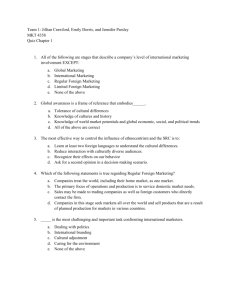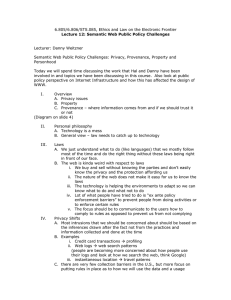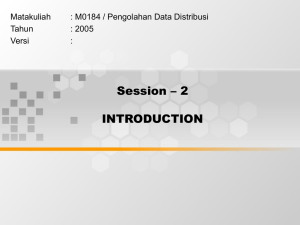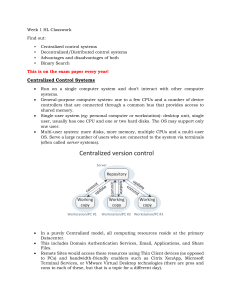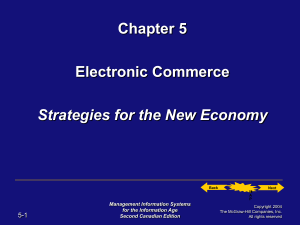unit 4 - ch 7 textbook questions
advertisement
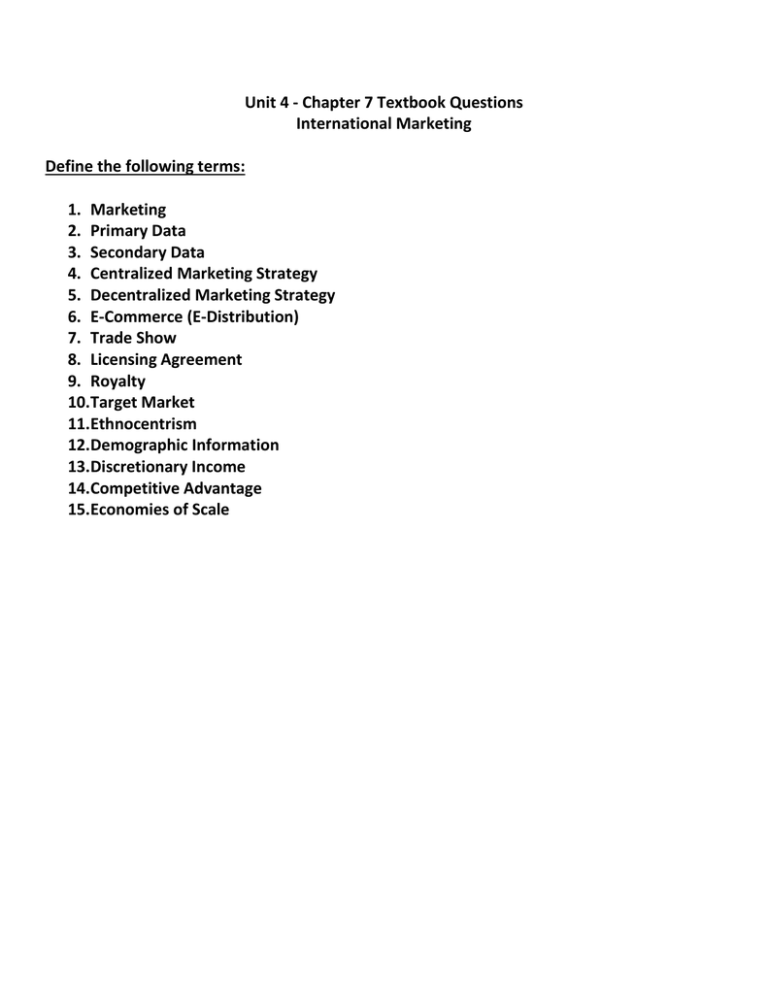
Unit 4 - Chapter 7 Textbook Questions International Marketing Define the following terms: 1. Marketing 2. Primary Data 3. Secondary Data 4. Centralized Marketing Strategy 5. Decentralized Marketing Strategy 6. E-Commerce (E-Distribution) 7. Trade Show 8. Licensing Agreement 9. Royalty 10.Target Market 11.Ethnocentrism 12.Demographic Information 13.Discretionary Income 14.Competitive Advantage 15.Economies of Scale Chapter Questions: 1. List six common activities involved in marketing and describe the primary goal of marketing. 2. What type of market research information can only be obtained via the use of primary data and not secondary data? 3. Name three factors that should be considered when developing products for foreign markets. 4. Name three types of costs that influence pricing decisions. 5. Name five types of advertising strategies that may be used to promote a product. 6. Name four sales methods that may be used by a clothing manufacturer to increase revenues. 7. What is logistics and what is involved in the process? 8. What are the four Ps of international marketing? 9. How must Canadian products sold in foreign markets be modified with respect to packaging requirements? With respect to ingredients? With respect to foreign style or fashion considerations? 10. What is the major disadvantage of using a centralized marketing strategy (as opposed to a decentralized marketing strategy) when entering a foreign market? (place) 11. Describe three major types of e-commerce transactions. 12. How do some companies use foreign sales agents (or sales forces) to market their products in target countries? 13. What are three major advantages of owning a branch plant in a foreign market? 14. Describe the three main forms of licensing agreements. 15. Why do some companies use acquisitions of foreign businesses to eliminate competition? 16. What are four types of costs that may increase the price of Canadian-made products in foreign markets? 17. Describe three ways to advertise and promote one's products in foreign markets. 18. What are the two Cs of international marketing? 19. Name three ways to avoid ethnocentrism when marketing one's products in foreign markets. 20. Name three types of demographic information. 21. What is the difference between direct and indirect competition and provide an example of each. 22. Describe four ways that a company may possess a competitive advantage over its competitors. 23. How do Canadian consumers shop globally today? How do Canadian consumers shop locally today?





